
Rhagio is a worldwide genus of predatory snipe flies. Several species in this genus are referred to as downlooker or down-looker flies because they sometimes perch on tree trunks in a head-down position. There are approximately 170 species. They can be distinguished from other rhagionids by the open anal cell on the wings and the lack of a kidney-shaped arista.
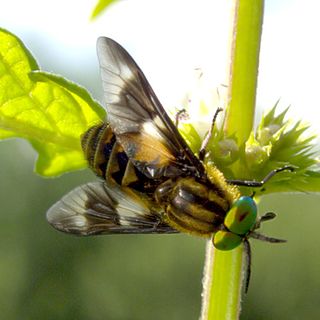
Superfamily Tabanoidea are insects in the order Diptera.

Haematopota is a genus of flies in the horse-fly family, Tabanidae. Among the horse-flies, they are most commonly known as clegs. Many species have colorful, sinuously patterned eyes in life, a character that fades after death. The wings are typically patterned with spots of grey. The genus is named from the Ancient Greek for blood-drinker: αἷμα, haîma, blood; πότης, pótës, drinker. Some species are known to be vectors of livestock diseases.

Atherix is a genus of 'ibis flies' belonging to the family Athericidae, a small family very similar to the Rhagionidae. Species within this genus are present in most of Europe and also in the Nearctic realm.

Solva is a fly genus in the family Xylomyidae, the "wood soldier flies".
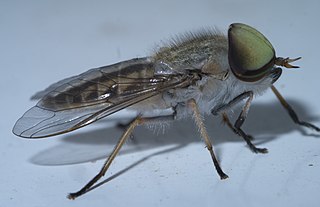
Tabaninae is a subfamily in the family Tabanidae commonly known as horse flies. There are more than 3000 described species in Tabaninae.
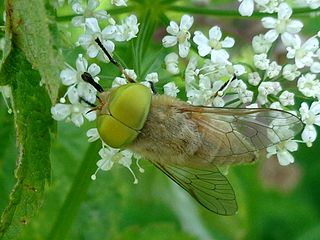
Atylotus is a genus of horse flies in the family Tabanidae.
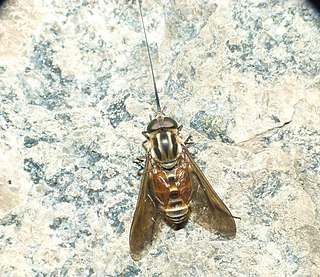
Philoliche is a genus of long-tongued Horse-flies found in the Old World. It appears to be the sole member of tribe Philolichini.
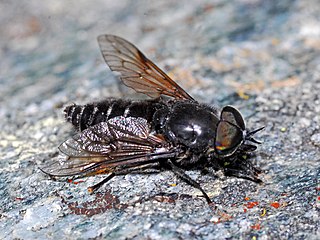
Dasyrhamphis is a species of 'horse fly' belonging to the family Tabanidae subfamily Tabaninae.

Pangoniinae is a subfamily of horse-flies in the order Diptera, containing at seven tribes and over 40 genera.
Scione is a genus of flies in the family Tabanidae.
Fidena is a genus of horse-fly in the tribe Scionini.

Osca is a genus of horse-flies in the tribe Scionini.
Pangonius mauritanus is a species of horse fly in the family Tabanidae.
Pseudacanthocera is a genus of horse flies in the family Tabanidae.
Catachlorops is a genus of horse flies in the family Tabanidae.
Rhigioglossa is a genus of horse flies in the family Tabanidae.











